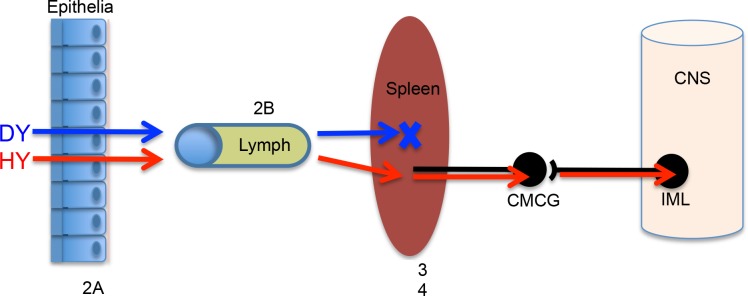Fig 6. Model of prion strain transport.
Following peripheral inoculation of HY TME (HY, Red arrows) or DY TME (DY, Blue arrows), PrPSc is transported across the epithelia, enters draining lymphatic circulation and is transported to secondary lyphoreticular system (LRS) tissues. At this point, HY TME establishes a productive infection, enters the peripheral nervous system and is retrogradely transported to the CNS where it causes clinical disease. In contrast, DY TME fails to establish infection in secondary LRS tissues, however, inoculation of peripheral nerves with DY TME results in transport to the CNS and establishment of infection indicating that the restriction in DY pathogenesis occurs in secondary LRS tissues. Since these tissues contain the necessary factors for DY TME formation in vitro, the relatively low rate of PrPSc formation and high rate of PrPSc degradation, compared to HY PrPSc may contribute to tissue tropism and the failure to establish disease. CMCG—celiac and mesenteric ganglion complex. IML—intermediolateral cell column of the mid thoracic spinal cord. X–Location of restriction of DY TME pathogenesis.

